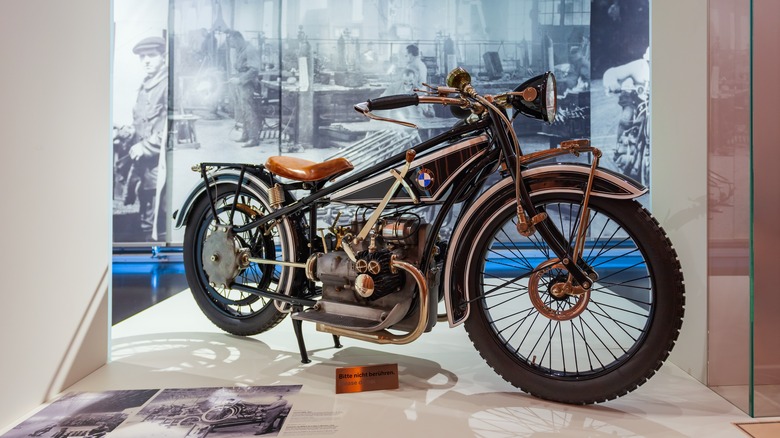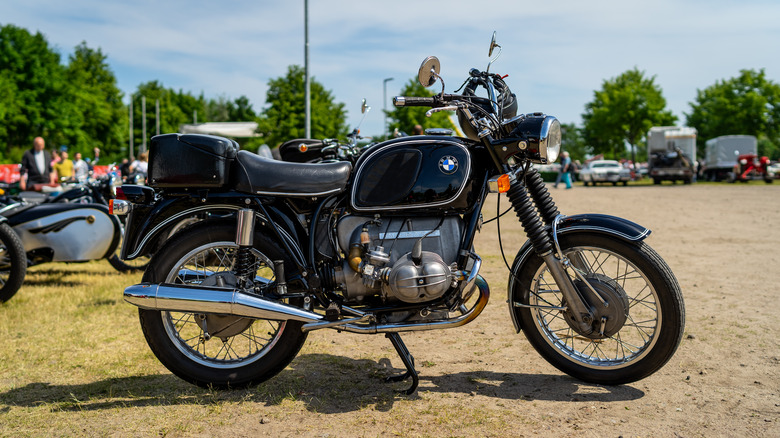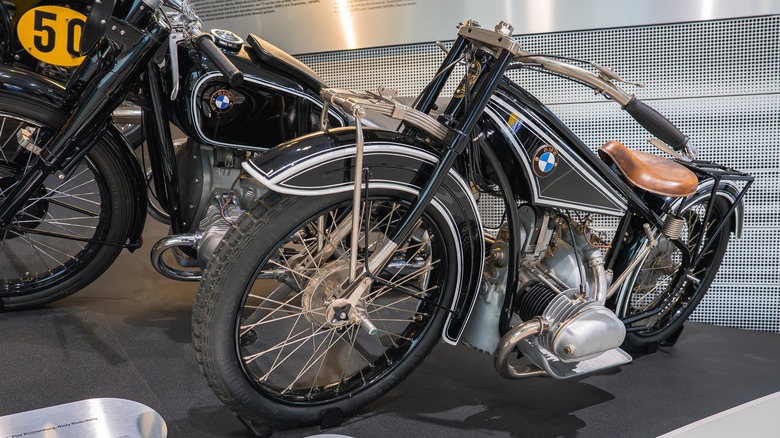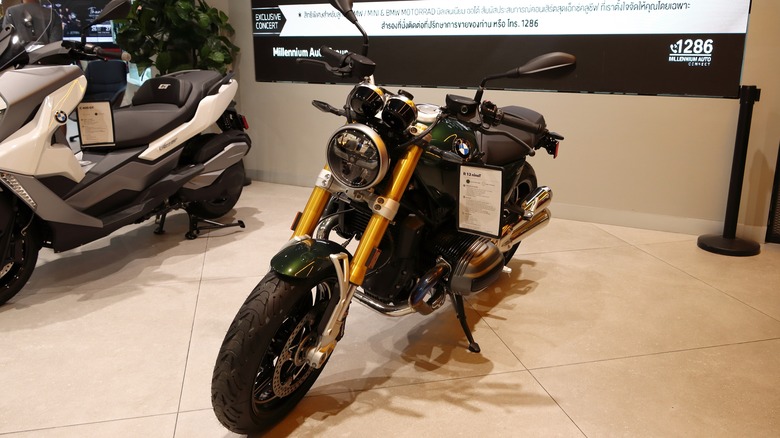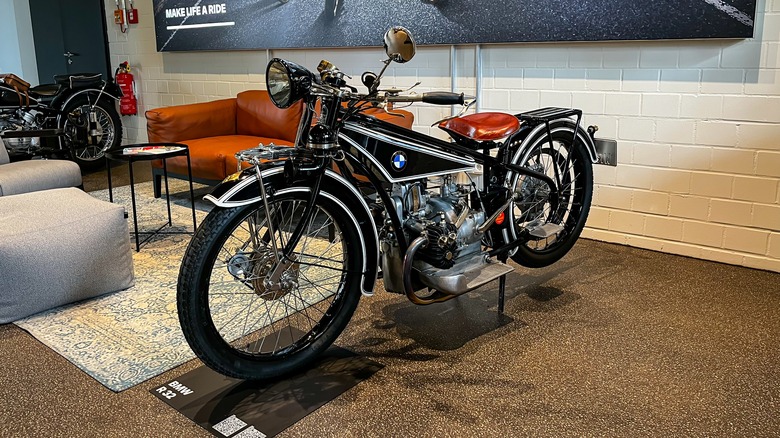4 Underappreciated Classic Motorcycles From The Early Days Of BMW
When you think of BMW motorcycles, the usual suspects come up: the R1250GS (one of the most successful BMW motorcycles in history), the S1000RR (which might not be suitable for beginners), maybe the R nineT if you're into the retro vibe. But before all that — before adventure bikes, electronic aids, and 200-horsepower sport machines — BMW laid its foundation with simple, effective engineering. And some of those early machines, while overshadowed by the ones they inspired, still hold their ground today.
BMW's motorcycle legacy goes back to 1923 with the R 32 and hasn't stopped evolving since. The company turned to bikes after the Treaty of Versailles banned aircraft engine production. That pivot gave birth to the flat-twin boxer engine, a configuration that's become inseparable from the brand. Over the years, BMW cranked out a variety of motorcycles aimed at racers, commuters, and explorers, some of which quietly shaped motorcycling history while flying under the radar.
This list isn't about the most powerful or most famous BMW bikes. It's about the ones that quietly pushed boundaries or influenced what came next, often without getting the credit. Whether through innovation, endurance, or just being the right bike at the wrong time, these four machines helped define what BMW Motorrad would become.
BMW R75/5: The road bike that accidentally invented the GS
The R75/5 was never meant to go off-road. It was BMW's big boxer road bike, launched in 1970 with a 750cc engine, a new frame, and the company's first electric starter. Yet, despite its highway-first design, it laid the groundwork for one of the most important motorcycle categories ever: adventure bikes. On paper, the R75/5 looked like a solid, practical machine. It was part of BMW's new /5 series, which introduced the Type 247 engine, an air-cooled boxer twin that BMW would keep using into the '90s. It had a top speed of around 109 mph and could cruise highways all day. Later versions got a longer wheelbase for more stability.
Enthusiasts started modifying the R75/5 into scramblers, raising the exhaust, adding knobby tires, and taking it off-road. What initially appeared to be just a passing trend proved to be highly effective. Herbert Schek demonstrated the bike's potential by riding a customized R75/5 to victory in the German off-road championship for three consecutive years. His success didn't stop there, he also secured gold medals in the International Six Days Trial (ISDT), which was considered the most grueling enduro event in the world at that time.
Those custom-builds caught the attention of BMW engineers, who eventually turned the idea into a purpose-built off-roader: the GS80 prototype. That bike evolved into the R80 G/S, the bike that launched an entire genre. Everyone remembers the G/S. Few remember the R75/5 that quietly made it all possible.
BMW R 37: The one that took BMW racing (and won)
By 1925, BMW wasn't content with just building bikes, it wanted to win. The R 37 was their shot at making a race machine, and despite selling just 152 units over two years, it delivered. Technically, it was an evolution of the R 32, BMW's first motorcycle. But instead of a modest 8.5 horsepower, the R 37 made 16. That doesn't sound like much today, but in the mid-1920s, it was enough to secure wins in the German Championships. The R 37 also kept the boxer layout BMW was already becoming known for, but used upgraded internals such as a new light alloy cylinder head with suspended valves to double its output.
The R 37's biggest contribution wasn't just speed; it was reputation. For a young brand trying to prove itself, success in racing mattered. The R 37 put BMW on the map not just as a motorcycle builder, but as a performance name. Without it, BMW might've faded into the background of the dozens of European manufacturers cranking out bikes at the time.
BMW R 12: The game-changer you've never heard of
Before WWII, BMW had already built a name for itself in Europe, but the R 12 took things to the next level, and not because of speed or racing pedigree. It was the first production motorcycle in the world with a hydraulically damped telescopic fork. That might sound boring, but suspension tech was primitive before the R 12 showed up in 1935. Motorcycles relied on basic flat-spring rockers, which were very stiff in comparison. The R 12's telescopic fork wasn't just smoother, it made real control over rough roads possible and kicked off a suspension revolution that nearly every manufacturer followed.
Its engine, a 745cc side-valve flat twin, wasn't the most powerful in the lineup, but it was durable and torquey. The R 12 was aimed at both military and civilian use, and ended up being one of BMW's most widely used motorcycles before and during the war. Over 36,000 were made. For all its impact, the R 12 rarely gets mentioned outside of historical deep dives. It doesn't have the romanticism of the R 90 S (one of the most iconic motorcycles of the '70s), or the legendary status of the R80 G/S. But if you've ever ridden a bike with a modern fork setup, you can thank the R 12 for getting that ball rolling.
BMW R 32: The first boxer that started it all
If you want to understand BMW's motorcycle DNA, start here. The R 32, released in 1923, wasn't just BMW's first motorcycle; it set the template for everything that followed. Designed by Max Friz, the R 32 featured a 494cc flat-twin (boxer) engine mounted longitudinally with shaft drive, a layout BMW still uses today. It made 8.5 horsepower and topped out at 58 mph, which was plenty for its time. More importantly, it was superior in quality compared to many competitors, and the drive shaft was easier to work on.
The R 32 didn't dominate races, and it didn't spark a cultural movement like the R nineT or the GS series. But it laid down the blueprint and declared how BMW was going to play the game. Almost every boxer-powered BMW, from the postwar R 75/5 to the latest R 1250 GS, owes something to this bike. Without it, there wouldn't be a "BMW style" at all, and that's why it deserves more attention than it gets.
